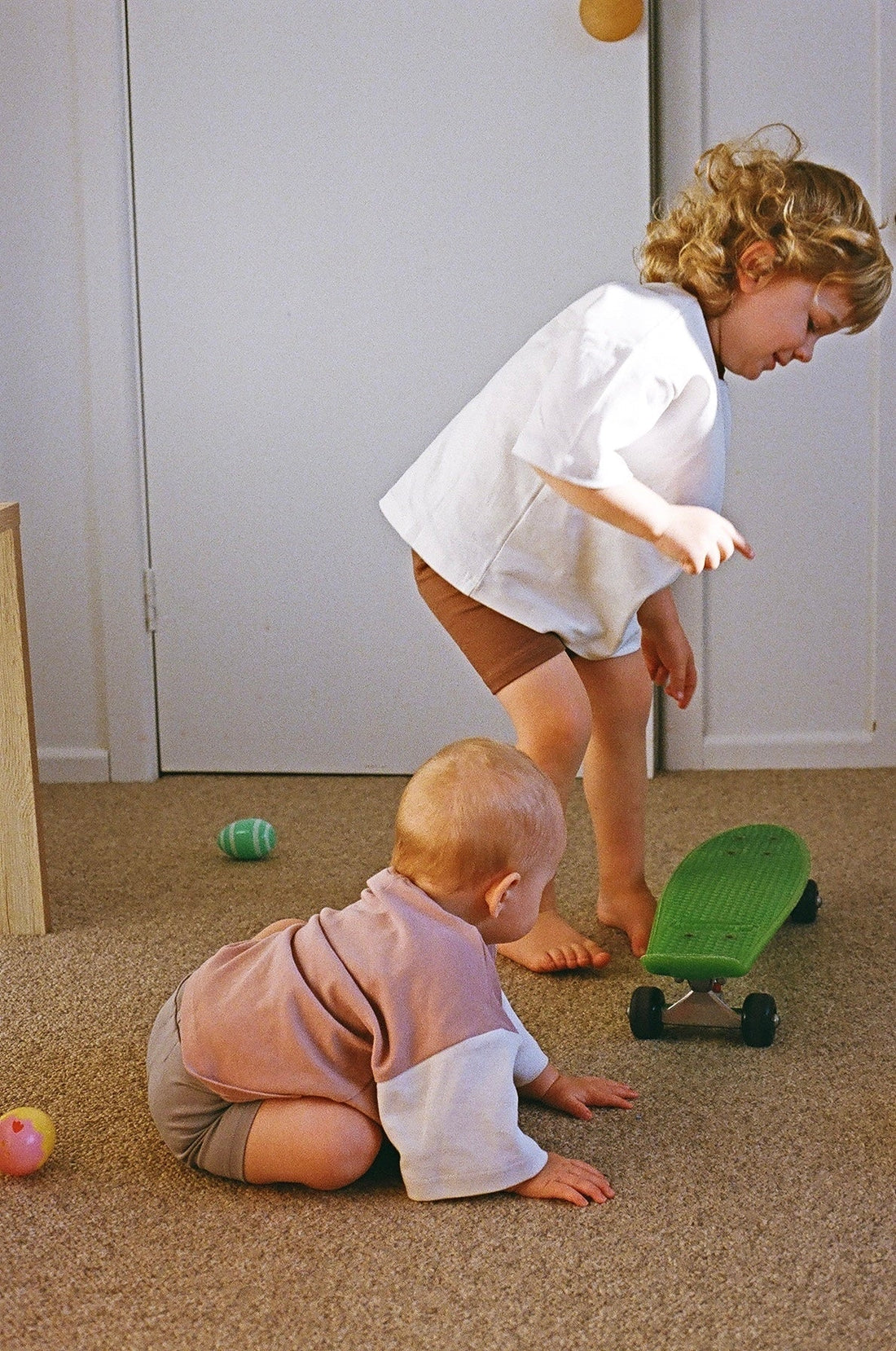
Let's talk 'learning' in the early years (and why it's simpler than you think!)
Share
Hey!
Welcome to my first official blog piece. I’d be lying if I said I wasn’t nervous – there’s something incredibly personal about writing for others that makes me feel a little vulnerable. But hey, life is about taking risks, right?
So, I thought I’d steer away from the usual fun and functional kids’ clothing chat for a moment. As much as I love talking about adorable baby outfits, comfy everyday wear, and stylish staples for little ones, today I wanted to share something a bit more personal.
Let’s start with a question…
What’s the first thing that comes to mind when you think about ‘learning’ for your preschool-aged child?
Is it structured activities? Carefully planned educational experiences? Maybe even a whole lot of spare time to make it all happen?
If so, you’re not alone.
But what if I told you that learning happens in the simplest everyday moments?
Two of the most important factors in supporting children’s learning and development are:
YOU
Their environment
Now, that’s not to say you should throw out all their toys, but you certainly don’t need to spend thousands of dollars in the name of learning.
Let’s get into the nitty gritty for a second…
The Victorian Early Years Learning and Development Framework (VEYLDF) tells us that children’s early experiences and relationships from birth play a crucial role in shaping their future outcomes. This includes:
• Problem solving and decision-making abilities
• The ability to experience, regulate, and express emotions
• Fostering close, reciprocal, and nourishing relationships
• Exploring and learning about themselves and the world around them
(Institute of Medicine, 2015; AIHW, 2015)
So what does that mean for us as parents at home?
One word: PLAY!
Let’s drop the idea that everything needs to be structured and perfectly planned for it to “count.” Yes, there’s definitely a place for intentional learning, but in my view (and many others), letting kids simply play is one of the best things we can do. Let them be bored, let them explore, and when possible, be there to help them make sense of it all.
Play is where growth happens. It builds the foundations for relationships, critical thinking, communication, and creativity.
So what can we do at home to support learning and development?
I promise this is easier than it sounds – in fact, I guarantee you’re already doing most of it.
Here are some simple, everyday ways children learn through play:
- Reading, singing songs, and chatting throughout the day
- Listening and dancing to music
- Making instruments (think rice-filled bottles or banging pots and pans)
- Building cubbies with blankets or cardboard boxes
- Throwing and catching balls
- Exploring dress-ups, pretend play, or hide and seek
- Sensory play (rice tubs, play dough, water play)
- Everyday tasks like hanging washing, gardening, or cooking
- Creating obstacle courses
- Playing outside in nature
If it hasn’t been made clear yet, let me say it loud and clear:
YOU ARE ALREADY DOING ENOUGH.
You’re supporting your child’s learning every single day – without even realising it. They don’t need elaborate lessons. They just need you. Time, connection, and play.
Whether it’s chasing bubbles in their comfiest Otto & Bear romper, or curling up for story time in a soft Coffee Club tee and Snuggle Club Cosy – these are the moments where the magic happens.
What does learning look like in your home?
Share your simple, special moments – in all their messy, joyful glory – and let’s celebrate and inspire each other as we support our little ones through fun, comfort, and connection.
References:
- Learning for babies and young children (2025) Raising Children Network. Available at: https://raisingchildren.net.au/babies/play-learning/learning-ideas/learning-baby-to-preschool (Accessed: 27 March 2025).
-
Department of Education and Training (2016) ‘Victorian Early Years Learning and Development Framework | For All Children Birth to Eight Years’. Victoria State Government.
-
Australian Children’s Education and Care Quality Authority (ACECQA (2024) Information Sheet: Belonging, Being and Becoming | Play-Based Learning and Intentionality, ACECQA. Available at: https://www.acecqa.gov.au/nqf/national-law-regulations/approved-learning-frameworks (Accessed: 01 April 2025).
-
NSW Government (no date) Learning through play, Education - NSW Government. Available at: https://education.nsw.gov.au/content/dam/main-education/early-childhood-education/information-for-parents-and-carers/learning-through-play.pdf (Accessed: 04 April 2025).

6 comments
LOVE this! Thank you so much for the tips for play.
At home we are embracing lots of singing, making fun out of the everyday tasks and enjoying the little moments together!
Can’t wait for the next blog post x
It’s been a long time since I had preschool school but this was a fantastic read! I will definitely be telling family and friends about this. I think sometimes we forget the small things are the most impactful 💓
I love love love this … play is the most important part of a child’s development so thanks for sharing
I’m excited for more blogs to read
❤️❤️
LOVE all of this and love you even more. So proud of you for going out there and doing something like this!
Great read thanks Jord! It’s nice to have some reassurance that I’m doing enough as a mum 🥰